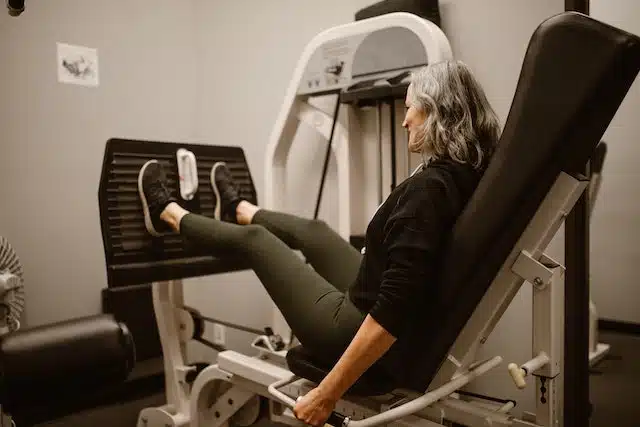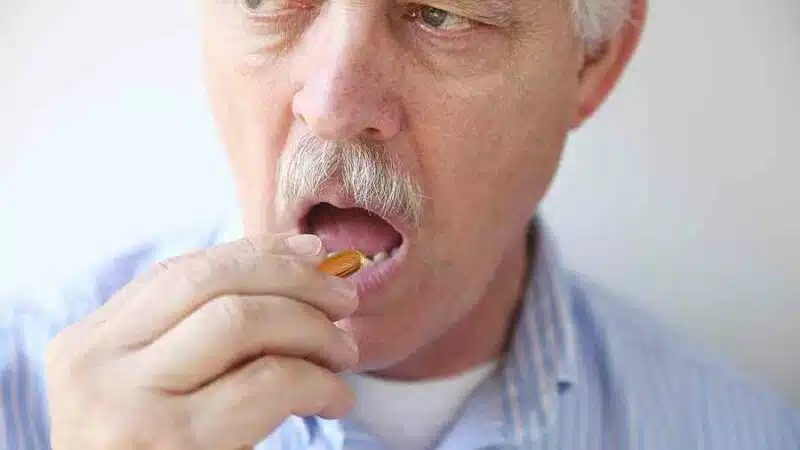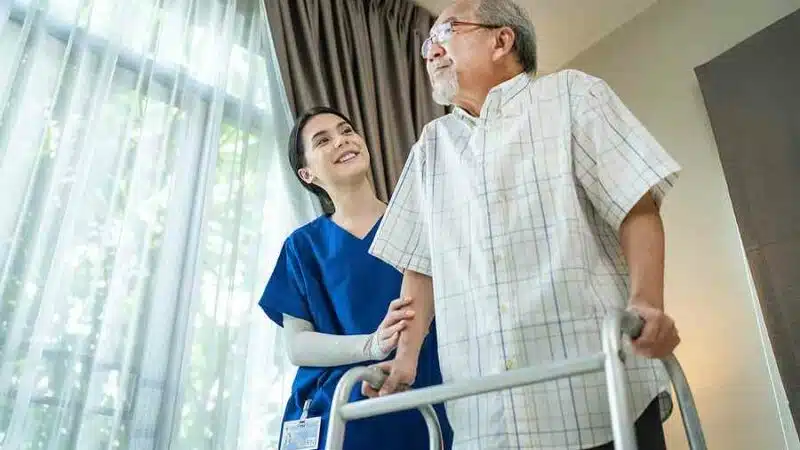How to Stay Fit And Competitive with Age-Related Pain Or Degeneration

Staying fit and competitive can be challenging as we age, especially when dealing with pain or degeneration.
Even the smallest feats and victories we once took for granted may now come with a new side-stitch or backache that sucks up extra recovery time.
As a former college athlete, being active and in shape is a huge part of my soul and who I am.
The competition, the ability to be in shape and keep up with friends and kids is what keeps me feeling young.
However, as I age, my own pains are becoming more apparent, and that is something I can relate to with my patients.
I became a double-board-certified interventional pain management specialist and physiatrist after playing D1 soccer in college, so I’m uniquely in tune with the demands competitive sports can place on our bodies, both when we’re at the peak of our game and in the many years that follow.
It can be a humbling experience to accept – especially for those used to competing at the elite level – but getting older as an athlete doesn’t have to sentence you to the sidelines.
The key is learning to be an adaptable athlete, which is what can keep you fit and competitive even into your 70s.
I happen to work with an Olympic senior sprinter who, at 76, competes all over the country in the Senior Olympics.
And while he has had his share of struggles, including a nagging hamstring injury, he’s able to continue the sport he loves by taking steps to modify his training/recovery routines and – quite frankly – working through his pain.
The reality is that there is no athletic lifestyle without its share of injury or pain, especially as we age, and that’s true whether you’re a senior sprinting dynamo at the Olympic level or the weekend warrior entering occasional 10K races.
It’s about modifying some of these activities to keep injury and pain from worsening, where you’re out of commission or have to give up a sport entirely.
To do so, it is important to work with the right pain specialists, sports medicine doctors and physical therapists to maximize your function while limiting injury and pain.
You’ll want to balance motion preservation while still satisfying that competitive itch, so it is essential to understand the limitations of your body, something these experts can help you determine.
For instance, overuse is the biggest contributor to injury.
As you get older, you are more likely to have injury to certain anatomical structures from repetitive motion.
Therefore, it is necessary to work with the right trainer who can find the balance of being able to push you to your peak performance without overdoing it to cause injury.
This will help ensure adequate strength of the muscle groups that provide protection, support and stabilization to vulnerable structures such as discs in the spine and certain joints that face much wear and tear.
It will also help maintain and fine-tune proprioception and form.
Pro-athletes face this challenge at a different level, where they want to push it and maximize stamina, fitness and strength, but they don’t want to put someone on the injury list.
As we age, it’s important to understand which sports and exercises are harsh on our spines or joints.
For me, this meant modifying my running routine. I LOVE running, but I also know that running every day can accelerate some age-related degeneration processes to both my knees and my back.
Therefore, I alternate running with swimming and give myself an extra rest day, so I get a little extra recovery.
I never expected to like swimming, but I know it’s great for my cardiovascular system, and so I challenge myself to do it.
I don’t overdo it and I don’t feel forced to do it, but I do swim to give my joints the rest they need while still pushing my cardiovascular system.
Another patient of mine is an avid hiker approaching her mid-50s with osteoarthritis in her left knee from a skiing accident.
While hiking is a great sport and form of exercise, it can be especially hard on the back and the knees if you are doing long-distance or thru-hikes and are not used to it.
It is essential to build up to long-distance hikes using proper supportive shoes and hiking sticks, especially if you’re carrying weight in your pack and/or feel less stable on your feet than you used to be.
Hiking sticks essentially add another limb to balance and support your gait, and being a four-limb creature versus a two-limb creature can be quite helpful when building up strength or going longer distances with less debilitating limitations.
This patient is now gearing up to hike the 2,650-mile Pacific Crest Trail!
Of course, each athlete (pro and weekend warrior alike) is different physiologically and may have a different threshold for pain.
Again, the guidance of a team of professionals – pain specialists, sports medicine doctors, PTs – can help you navigate those nuances with the least amount of struggle.
Staying fit and competitive as we age is a challenge many of us face, but it’s not impossible.
With the right mindset, the right support team and the right modifications to our exercise routines, we can continue to pursue our athletic passions and keep our bodies healthy and pain-free.
It’s all about finding that balance between pushing ourselves to our limits and avoiding injury and chronic pain.
By listening to our bodies, being adaptable and seeking the guidance of experienced medical professionals, we can all continue to stay active and competitive well into our golden years.
Gain insights into selecting the right physiotherapist to manage age-related pain and degeneration effectively, while exploring strategies to stay fit and competitive in later years. Dive into this comprehensive guide to prioritize your physical well-being on LifeOver50





